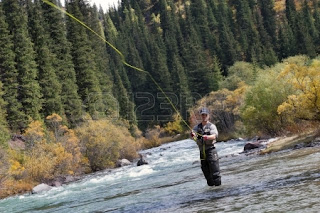Atul Gawande’s book, Being
Mortal: Medicine and What Matters in the End, takes
a good look at how we, and the medical community, deal with people in the later
years of their lives. For those of us with aging parents or who ourselves are
already past the midpoint, whatever that may be, there are some very honest
observations and recommendations in Gawande’s latest offering.
I had conversations with my own parents prior to their deaths that were quite different due to the circumstances attending each one. When my grandfather died, I thought it was a good opportunity to talk with my father about his father’s death and how it had affected him. At that time I was in my 30’s, my Dad in his late 50’s and my grandfather was 82 when he died. To my surprise, my father used the occasion to talk about his own mortality. What he told me was essentially when that day would inevitably come, all the arrangements were already in place and that my brother and I did not need to be concerned about the details.
What I recall, besides being surprised about his openness and willingness to talk about life and death matters, was that this was typical of my father who was careful about details, who paid attention to seemingly small things that had a large impact, and who had a personal faith that transcended the mundane. He served as a good role model for me and my brother in so many ways and for that we will always be most grateful. When he died suddenly in 1979 at age 67 of a massive heart attack, we were shocked but in some ways already prepared. Among other things, what he had put in place for our mother provided for her for the rest of her life, which continued for another 30 years.
My mother, who remarried at age 70, four years after my father’s death, was a vital presence until the last year of her own life when the decline started to take its toll. When she was hospitalized with pneumonia in October at age 95, I recall an honest conversation between us about life and death and how gratitude had played such a large part in how she had lived. Her mind was alert, her sense of humor still in place and she said she was ready to die. What I said was that it was okay with me and I was sure that when that time came she would know and that we would be fine. She left the hospital, moved into a local care facility and four months later, checked out one night and just did not wake up in the morning. She had told her doctor that evening that she wanted no further medication or treatment except perhaps something to make her more comfortable. He complied. That was two months prior to her 96th birthday.
My wife’s mother, who will be 103 in January, moved recently into a life care community where she occupies her own small apartment with help down the hall if she needs it. It’s called “assisted living” and that arrangement seems to be working well. She is still sound of mind, although it is becoming more difficult for her body to function at the same high level. She is an avid reader, a published author, watches sports on TV and just had a party for some 17 friends although she says most of her close friends are already dead so she had to make some new ones. She took a cruise last year up the coast of Maine and down the St. Lawrence to Montreal. A companion traveled with her for assistance. She drives an electric cart around the center of town and loves the freedom it gives her to move about.
These examples serve me extraordinarily well as I consider how to make the most of whatever time remains in my own life. My intentions are to continue to connect with our families, to celebrate each day with that attitude of gratitude and on occasion continue working to help others with their own personal, professional and organizational transitions. I have written two small books in the past few years and have another fun one on the drawing board for this year.
Each sunrise brings the gift of a new day with unlimited and creative opportunities for enjoyment, relationships, conversations and connections. My active full time career of 50 years has morphed into part-time, much to be preferred. I have the luxury of accepting only those invitations that are truly interesting and in my judgment, worth the investment of time, effort and energy all of which fortunately still seem available.
We are blessed with the ability to travel widely and often. Our home base is in beautiful, northern New Mexico and our freedom to travel increased when we sold our home and properties in the country and moved into a much smaller house in town, into a 55 plus community. I would not have thought about becoming a “snow-bird” some years ago but the desire and ability to migrate south across the border seems to be one more gift. I suppose you could say it's part of a larger plan. Staying active physically, mentally, socially, emotionally and spiritually seems to be working, at least for now and for that I am enormously grateful.



